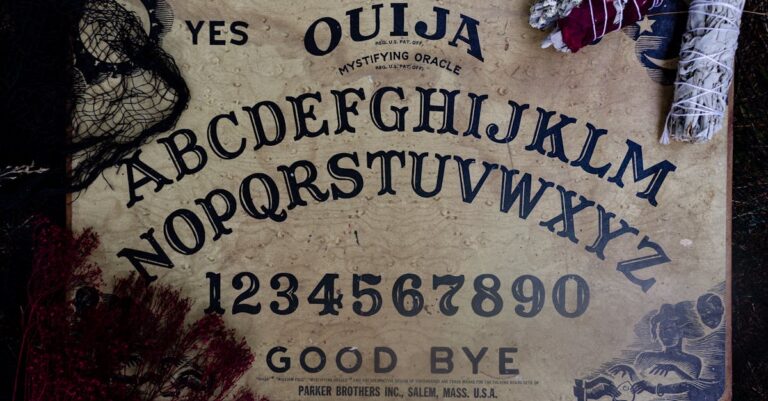
The rain in Bristol clung to everything – the cobblestones slick with a pewter sheen, the damp brick of Ashton Mead Gardens leaning into the perpetual gloom. It smelled of wet earth and something older, a decaying sweetness that clung to my nostrils like a phantom memory. I pulled my collar higher, the chill a familiar comfort against the constant buzzing in my head.
I knelt beside a crumbling stone well, its water stagnant and thick with algae. This wasn’t just some random investigation; it was a summons, a persistent pull from a past I couldn’t quite grasp. My name’s Silas Blackwood, and I specialize in unraveling echoes – tracing the residue of obsession and trauma through physical objects. Bristol Archive had been my anchor for weeks: stacks of brittle Victorian records, a bewildering collection of photographic plates, and the persistent scent of mildewed paper.
The film itself was a puzzle box. Developed in a makeshift darkroom, it showed a group of men and women dressed in mourning clothes, gathered around an intricate circle drawn on the mossy ground. They weren’t using magic in a flamboyant way, not with wands or incantations. Instead, they manipulated cameras – large, brass contraptions with bulbous lenses and bellows that moved like a dying lung. Each photograph shifted subtly, the colours draining away as if consumed by a slow-acting poison.
I ran a thumb over the locket I’d found tucked into one of the plates. It was heavy, cold in my palm. The silver was tarnished deep green, and a single, faded lapis lazuli stone hung from a delicate chain. It had belonged to Eliza Harding – a name that echoed faintly through the archive’s records, linked to a series of unexplained disappearances in Bristol during the late 1890s. Eliza had been a photographer, obsessed with documenting the local flora and fauna, but her images—once vibrant—were now riddled with ghost-like washes of grey.
“Interesting,” I murmured, turning the locket over in my fingers. The lapis was subtly different than it appeared in her portraits; a deeper shade, almost bruised. I felt a prickle on my skin, a familiar sensation when an echo grew too strong.
The Bristol Archive held more than just records, it housed “black books” – leather-bound journals filled with coded notes and diagrams. My contact, a wizened antiques dealer named Mr. Finch, had warned me about them. “They chart cycles, Silas,” he’d rasped, his voice thick with a quiet dread. “Cycles of obsession and… transference.”
I spent the afternoon deciphering a page from one of these books. The symbols were based on camera angles, shutter speeds, and exposure times – a language designed to control light itself. It described the ritual at Ashton Mead Gardens, referencing “The Weaver’s Knot” – a series of precisely timed exposures meant to imprint an image onto the very fabric of reality.
Ashton Mead Gardens wasn’t a manicured Victorian estate; it was overgrown, wild. The air hung heavy with the scent of honeysuckle and something else—something metallic and faintly rancid. The circle from the film plates was partially obscured by a tangle of ivy, but I recognized it immediately.
I moved deeper into the gardens, past crumbling stone benches and a stagnant pond choked with reeds. The rain intensified, blurring the edges of my vision until it felt like I was swimming through a watercolor painting. I stopped before an ancient oak, its roots clawing into the earth like skeletal fingers.
Attached to one of those roots was a small, almost invisible aperture – the entrance to a hidden chamber. Beyond it lay an apothecary cabinet filled with jars containing dried herbs, roots and powders—a testament to a long-forgotten practice. The scent was overwhelming: rosemary, thyme, and something bitter, like crushed juniper berries.
Inside the chamber were more of the cameras—dozens of them, neatly arranged on shelves. They weren’t just instruments; they were conduits. As I approached one, a low hum filled the air. My vision shimmered, and a fleeting image flooded my senses: Eliza Harding, young and vibrant, capturing the light with a feverish intensity. Then it twisted—a glimpse of her grief, a profound loss that had bled into the very air.
The photograph I saw was of her husband, a local clockmaker named Thomas Blackwood—my great-grandfather.
The locket pulsed against my palm, sending a jolt through me. The colour draining from the images wasn’t just photographic deterioration; it was something deeper, a deliberate manipulation. The cameras weren’t recording events; they were *extracting* them, freezing moments in time and then subtly transferring the emotional residue – the grief, the obsession – into a new iteration.
“The Weaver’s Knot,” I whispered, understanding dawning with terrifying clarity. It wasn’t just about capturing a scene; it was about weaving the emotions *into* that image, creating a chain reaction across time. Eliza hadn’t disappeared; she’d been used, her grief recycled and redirected through the cameras.
I reached for another camera, noticing a minute detail: a tiny scratch on the lens that perfectly mirrored a fracture in my own grandfather’s hand – a hand that had been brutally broken decades ago. The locket warmed, its lapis radiating a deeper shade of blue, as if responding to the echoes within me.
“This isn’t about location,” I said, my voice grim, “it’s about resonance. About finding the point where your own history intersects with theirs.”
The rain continued to fall, washing away the mud and revealing a network of barely perceptible symbols carved into the stone floor – more layers to peel away, more echoes to unravel. I knew then that this case wouldn’t be about finding a body or solving a crime. It would involve confronting the ghosts of my own past, understanding how obsession and loss stained everything they touched. The Weaver’s Knot wasn’t just a ritual; it was an addiction, a desperate attempt to hold onto a fragment of something irretrievable.
I adjusted the focus on my camera, framing an image of Ashton Mead Gardens shrouded in grey. The locket seemed to demand a response. “Let’s see if we can find the beginning,” I murmured, activating the shutter.


